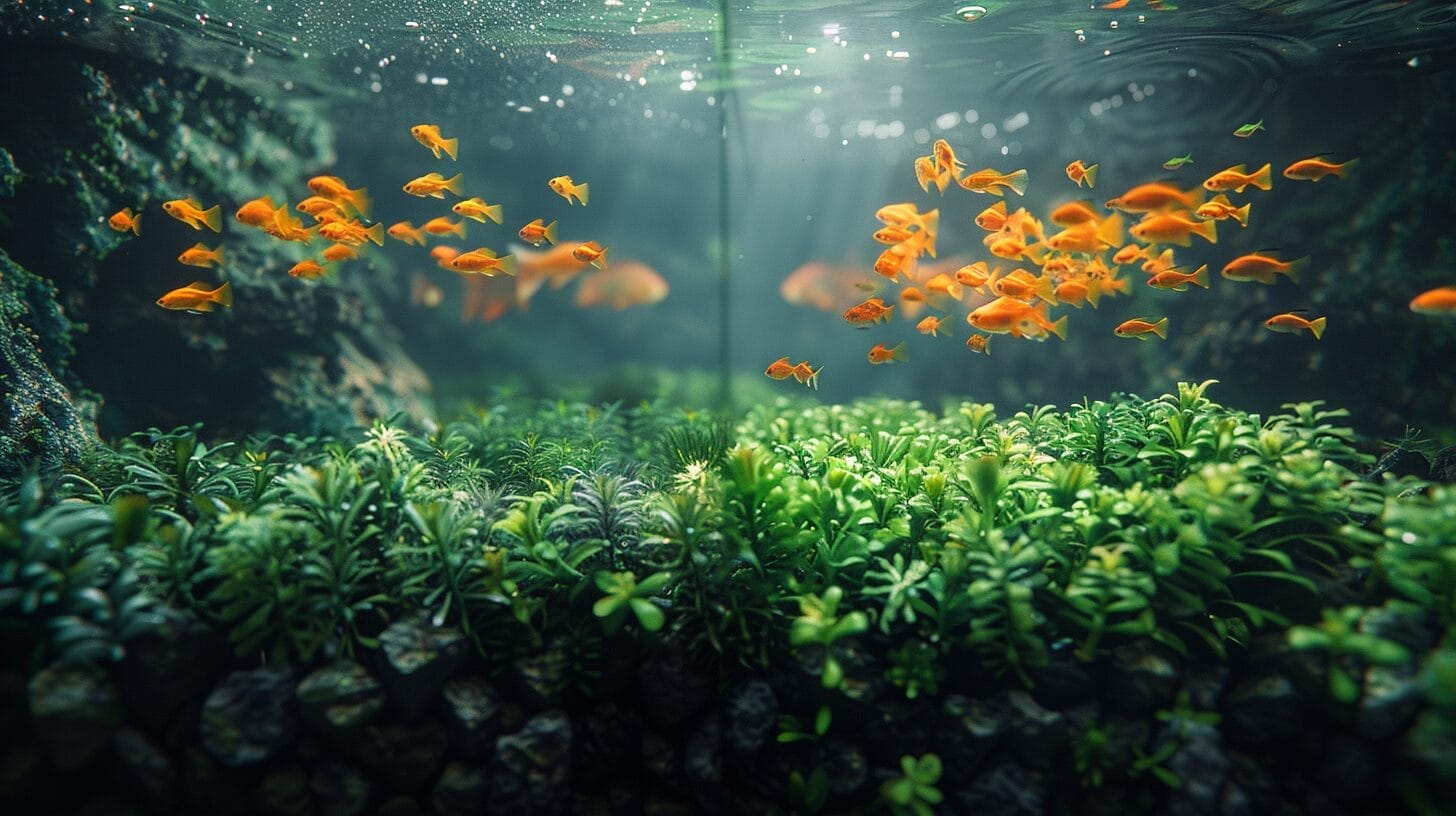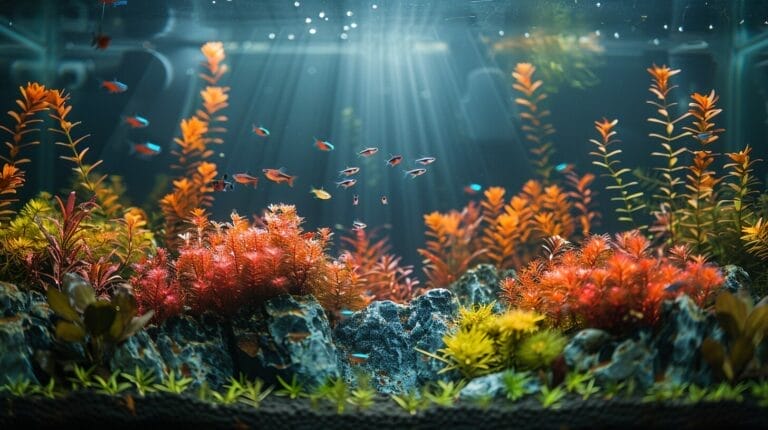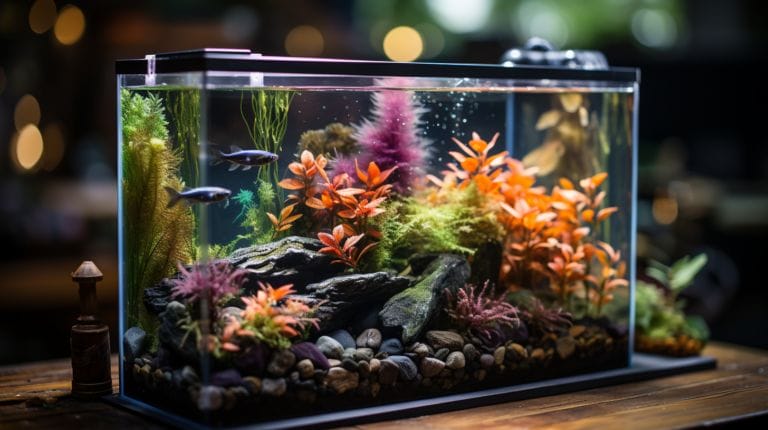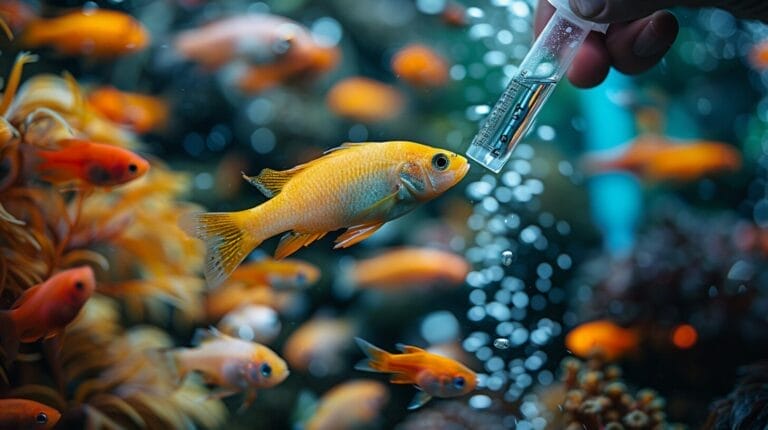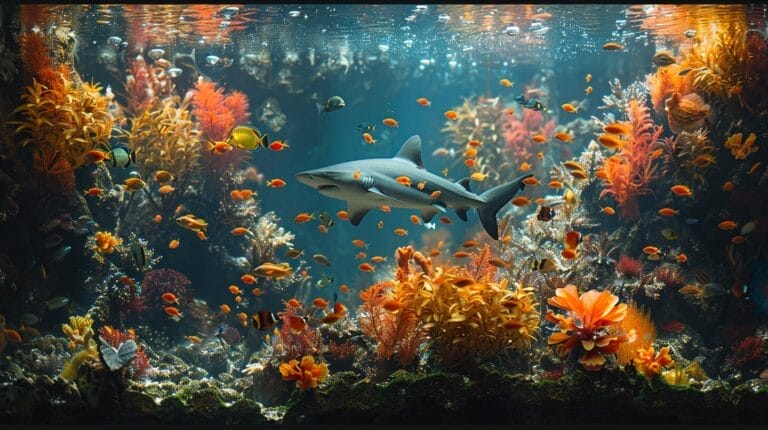Clear Algae in Fish Tank: Eliminate and Prevent Algae
Maintaining a pristine fish tank involves a two-pronged approach: removing existing algae and preventing its future comeback. By addressing factors like lighting, nutrients, and substrate, we can control excessive algae growth that affects the health of fish.
This Clear Algae in Fish Tank guide provides a comprehensive overview of effective strategies – from algae scrubbers and optimized filtration to the incorporation of algae-eating species – to maintain a well-rounded ecosystem in your fish tank. Let’s dive in!
Key Takeaways
- Optimize lighting to prevent algae growth and maintain a healthy tank ecosystem.
- Regularly monitor and control nutrient levels to prevent algae blooms.
- Clean the substrate to reduce nutrient buildup and inhibit algae growth.
- Utilize algae-eating species like Siamese Algae Eaters and Nerite Snails.
- Implement natural methods like live plants and beneficial bacteria for organic algae control.
Understand Algae Growth in Fish Tanks
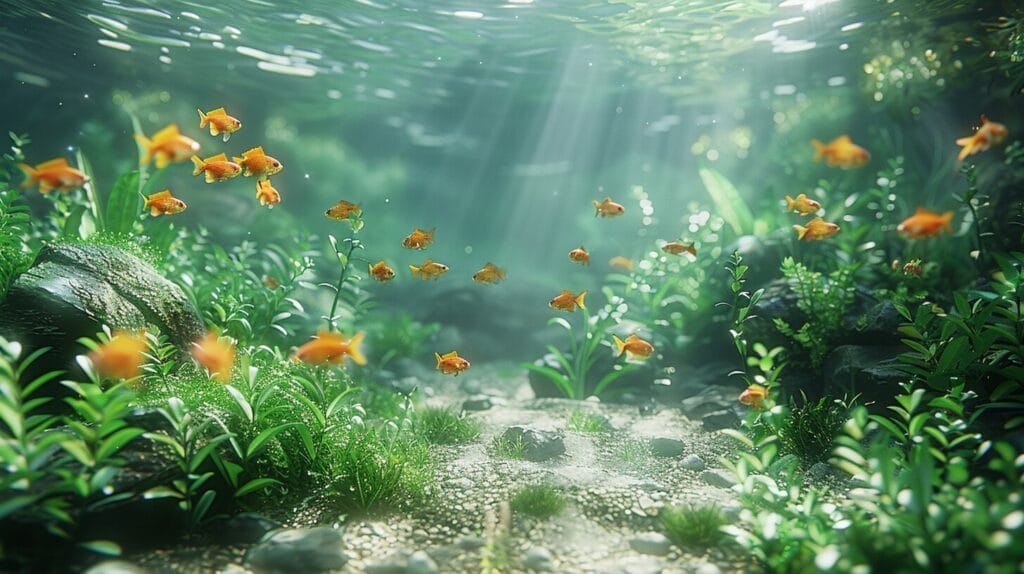
Understanding algae growth in your fish tanks begins with identifying the common types of algae. These organisms thrive on various conditions such as substrate, nutrients, and lighting. While algae growth is a vital part of a fish tank ecosystem, an imbalance can lead to excessive growth, impacting fish health.
The substrate in your tank can play a significant role in algae growth. Algae attach to surfaces, and a suitable environment for them to anchor and grow can contribute to increased algae presence. Nutrients, such as nitrates and phosphates, act as fertilizers for algae. Overfeeding or inadequate water changes can make these nutrients abundant, leading to uncontrollable algae growth.
Furthermore, lighting is essential for algae photosynthesis, driving their growth. Excessive light promotes algae proliferation, while inadequate lighting may hinder plant growth, allowing algae to dominate. Understanding these factors is crucial to maintaining a healthy balance in your fish tank.
Assessing Your Fish Tank Conditions
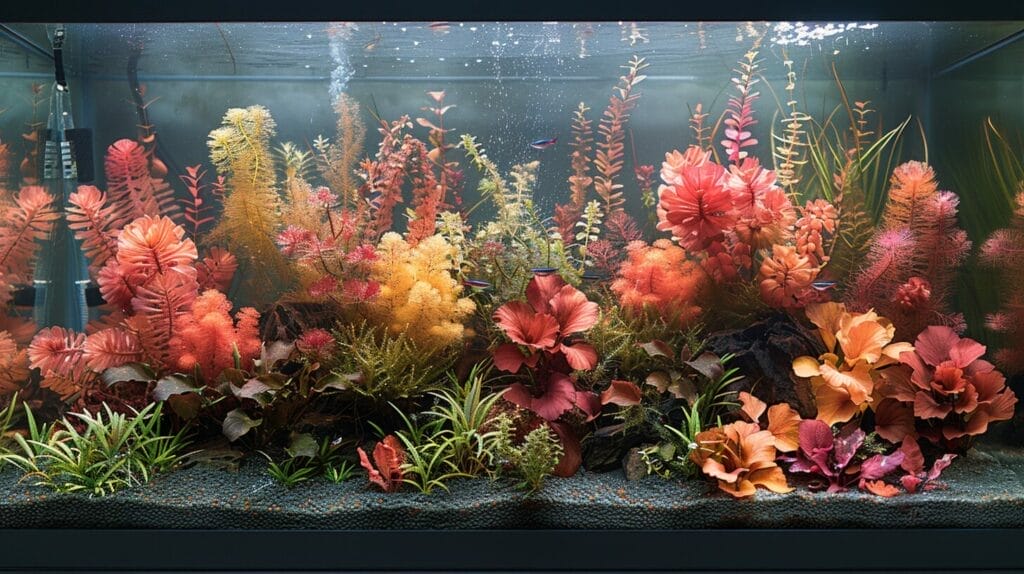
Proper maintenance of a fish tank requires regular assessments of lighting conditions, checks for excess nutrients, and monitoring of water conditions. Proper lighting is vital as too much light can promote algae growth, while insufficient light can hinder plant growth.
Excess nutrients from overfeeding or decaying organic matter can fuel algae blooms. Regularly assess the substrate for accumulated waste that could release nutrients into the water. Monitoring water parameters such as pH, temperature, and hardness is essential for the overall health of the tank inhabitants. Fluctuations in these parameters can stress fish and create favorable conditions for algae growth.
Techniques to Control Algae Growth
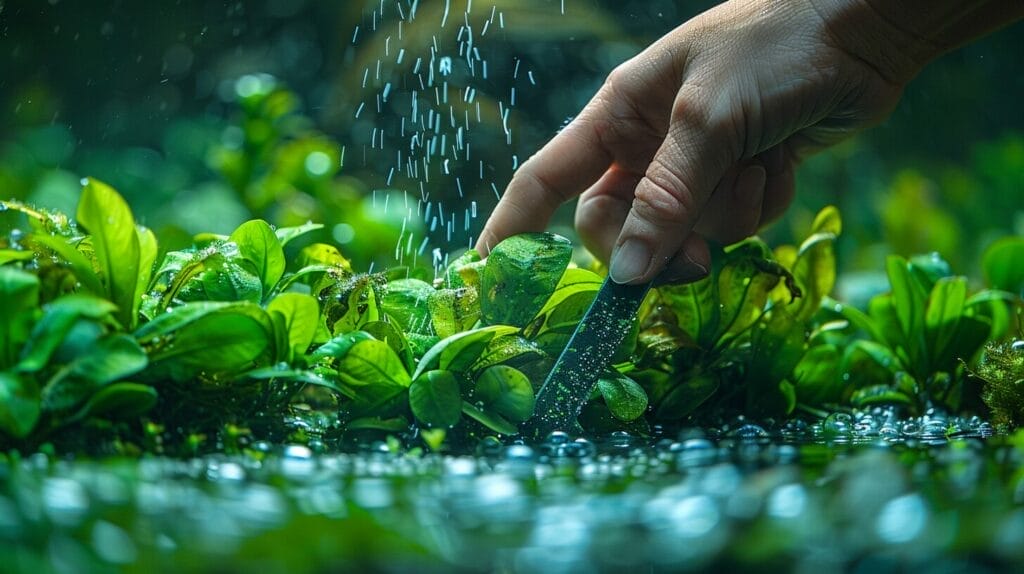
Implementing effective strategies to control algae growth in your fish tank is essential for maintaining a healthy aquatic environment. Algae scrubbers, designed to remove excess nutrients that algae thrive on, can be beneficial. Optimizing filtration systems can help by removing algae spores and preventing them from settling.
Incorporating live plants into your aquarium can also be helpful as they compete with algae for nutrients, hindering their growth. A well-rooted and maintained planted aquarium can significantly reduce algae problems.
Chemical treatments are available as a last resort. However, they should be used with caution as they can disrupt the balance of your tank. Regular cleaning routines, such as scraping algae off tank walls and vacuuming substrate, are also important in algae control.
Incorporating Algae-Eating Species in Your Fish Tank
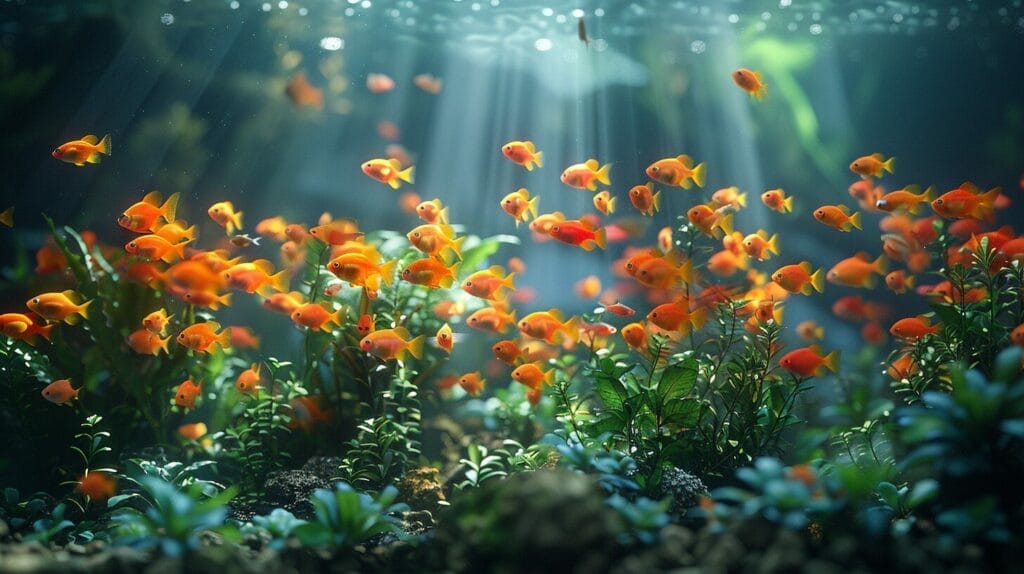
Incorporating algae-eating species in your fish tank can greatly help in controlling and preventing algae overgrowth. These species, such as Siamese Algae Eaters, play a crucial role in maintaining the balance of your tank’s ecosystem by feeding on algae from aquarium walls and other surfaces. They are an important addition to your tank’s clean-up crew, ensuring that algae levels are kept in check.
By introducing algae-eating species, you can naturally manage nutrient levels in the tank, creating a healthier environment for your fish.
| Algae-Eating Species | Diet | Habitat |
|---|---|---|
| Siamese Algae Eaters | Algae | Middle and bottom regions |
| Nerite Snails | Algae | All tank surfaces |
| Amano Shrimp | Algae | Bottom regions |
| Otocinclus Catfish | Algae | Bottom regions |
| Bristlenose Plecos | Algae | Bottom regions |
.
Organic and Natural Ways to Get Rid of Algae
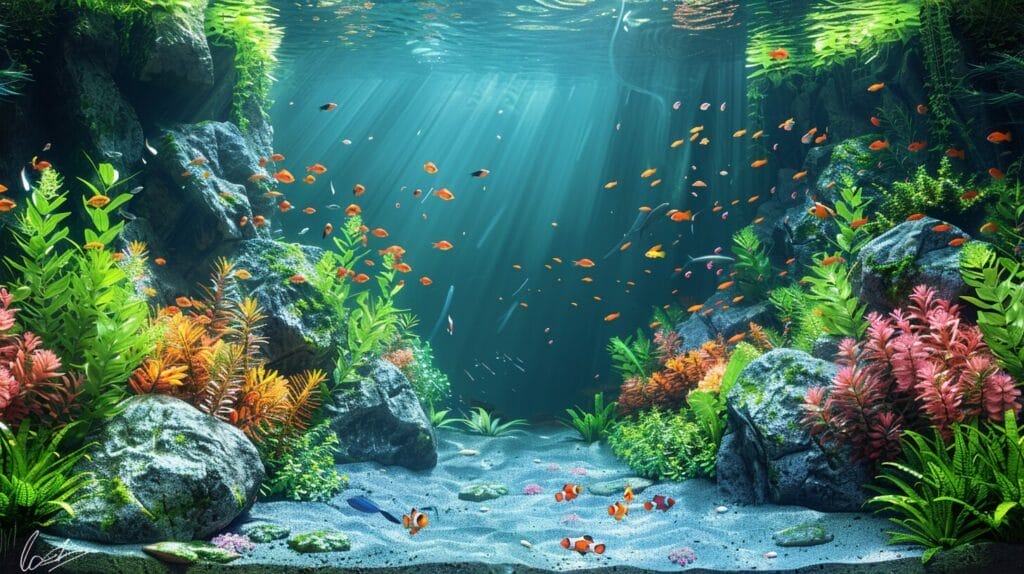
Amidst the challenge of algae growth in fish tanks, utilizing natural methods offers a sustainable approach to combatting this issue.
When looking to rid your tank of algae in an organic and natural way, consider the following:
- Live Plants: Adding live plants to your aquarium can help compete with algae for nutrients, hindering its growth and keeping your tank balanced.
- Beneficial Bacteria: Introducing beneficial bacteria can aid in breaking down organic waste, which is a common food source for algae, thereby reducing its presence.
- DIY Remedies: There are various do-it-yourself remedies using natural ingredients like vinegar, hydrogen peroxide, or algae scrubbers that can help control algae growth effectively.
- Organic Solutions: Opt for organic solutions over chemical interventions to maintain a healthy aquatic environment for your fish.
Can Algae Wafers Help in Preventing Algae Buildup in Fish Tanks?
The best algae wafers for otocinclus are an effective way to prevent algae buildup in fish tanks. These wafers provide essential nutrients for otocinclus catfish while reducing the overall algae growth in the tank. By incorporating these wafers into their diet, you can maintain a cleaner and healthier aquatic environment.
Preventing Future Algae Problems in Your Fish Tank
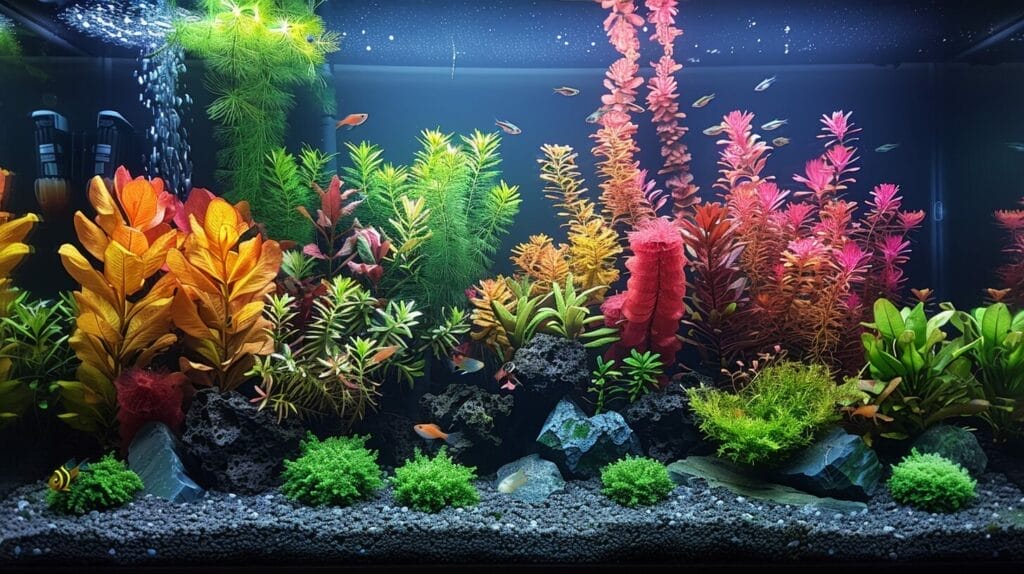
To prevent future algae problems in your fish tank, establish a regular maintenance schedule. By staying proactive with tank care, you can guarantee a healthy environment for your aquatic pets.
| Preventive Measure | Description |
|---|---|
| Proper Feeding Practices | Feed your fish the right amount of food to minimize excess nutrients in the water. |
| Regular Maintenance Schedule | Perform regular water changes and cleanings to keep algae-promoting nutrients in check. |
| Adjusting Lighting Conditions | Control the amount of light your tank receives to prevent algae overgrowth. |
| Using Chemical Treatments | Consider using safe chemical treatments to help manage algae growth when necessary. |
Conclusion
To summarize, keeping algae in check in your fish tank is crucial for the health and well-being of your aquatic pets.
By grasping the reasons for algae growth, evaluating your tank conditions, implementing control techniques, and incorporating algae-eating species, you can sustain a clean and balanced environment for your fish.
Remember to regularly monitor and maintain your tank to prevent future algae problems and guarantee a thriving ecosystem for your underwater friends.
Frequently Asked Questions
What are some common ways to remove algae from a fish tank?
You can manually remove algae using tools like a toothbrush or sponge. You can also consider using liquid carbon or algae-eating fish and invertebrates.
How can lighting and nutrients affect algae growth in a fish tank?
Lighting and nutrients play a crucial role in algae growth. Too much lighting or excess nutrients can cause algae bloom in your tank.
How do I prevent algae from growing in my freshwater aquarium?
To prevent algae growth, you can gradually increase or decrease your nutrient levels, adjust lighting duration, and ensure regular cleaning of your tank.
What are some common types of algae found in fish tanks?
Some common types of algae include diatom algae, hair algae, and black brush algae (BBA).
How can I clean algae off acrylic tanks without causing damage?
You can try using a soft sponge or a dedicated algae scraper specifically designed for acrylic tanks to clean algae without scratching the surface.

